Nikon CoolPix P5100 Review
Nikon CoolPix P5100
Nikon adds an extra two megapixels to its enthusiast’s compact.
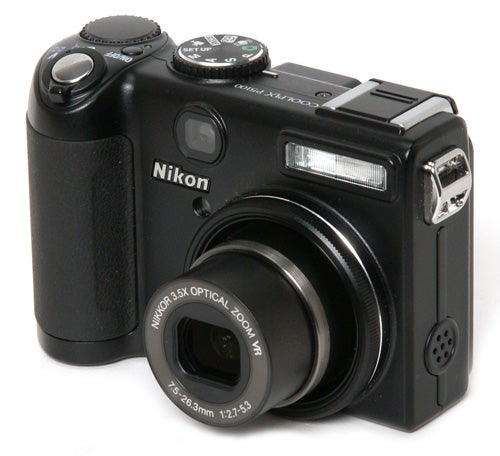
Verdict
Key Specifications
- Review Price: £215.00
Back in May last year I reviewed the 10-megapixel Nikon CoolPix P5000, which at the time was the flagship of a new series of high-spec compacts from Nikon, aimed at more advanced photographers. Since then the P series has expanded and now includes six models, five compacts and the P80 super-zoom bridge camera. Nikon has just launched the 13.5-megapixe P6000 which I’m hoping to review soon, but before then I want to take a look at the P5100, a 12.1-megapixel upgrade of the original P5000 that was launched late last year.
Since the price of entry-level digital SLRs has fallen to the point where almost any keen photographer can afford one, there aren’t nearly as many high-end compacts around as their used to be. Most compact cameras these days are simple point-and-shoot models designed as much for style and fashion as for ease of use and performance, but the P5100 is not entirely without competition. It’s tempting of course to compare the P5100 with Canon’s flagship compact the PowerShot G9, but it’s not really a fair comparison. The G9 currently sells for £328, which is over £100 more expensive than the P5100, and in fact more expensive than some DSLRs. A more valid comparison would be the recent PowerShot A1000 IS (£150) although that model has a smaller sensor and a larger lens.
The P5100 certainly looks the part. It shares the same ruggedly functional body as the P5000, with a tough plastic shell over a metal chassis, but where the P5000 has some silver details such as the lens barrel and the controls, the P5100 is all textured matt black, making it look even more macho than before. The design is a bit industrial, but it is a comfortable camera to hold and use. It has a large rubberised handgrip with a nice thumbgrip area on the back which also has a rubber pad, making it very secure to grip.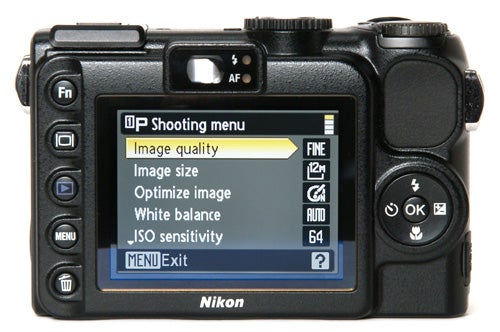
The controls are only a little more complex than the average compact, and are sensibly laid out for the most part, although the vertical row of buttons to the left of the monitor are so positioned to make the camera look more like a digital SLR rather than for ease of use. It would have made more sense to move the monitor to the left a bit and have all the buttons on the right-hand side for easy one-handed operation.
To be brutally honest, apart from the more powerful sensor the P5100 doesn’t offer a lot of improvements over the P5000. It has a new EXPEED image processor, supposedly the same one used in recent Nikon DSLRs, but apart from that the new camera shares virtually all of its features with its predecessor. That’s not a bad thing, because the P5100 is a well designed and nicely specified camera, but it would have been nice to see a few of its shortcomings addressed. The P5100 still has no Raw mode, no manual focusing and no adjustable white balance. It does have some limited manual image control, but not over colour or tone. If you already own a P5000 it’s really not worth upgrading.
As with the P5000, the P5100 has optional manual exposure, with aperture priority, shutter priority and full manual exposure available on the main mode dial. The degree of available control is unchanged from the earlier model, with shutter speeds of 8 – 1/2000th of a second and aperture values of f/2.7 to f/7.6 available in 1/3EV increments. I would have liked to have seen a longer maximum shutter speed, and ideally a B function, which is always a useful feature for creative photography. However any manual control at all is a welcome sight these days.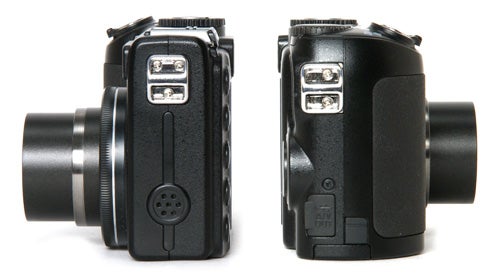
There is one new feature that I’m pretty sure wasn’t present on the P5000, although anyone who owns one may wish to correct me. The P5100 has a distortion control feature, which counteracts the rather pronounced barrel distortion which the lens produces at wide angle by stretching and bending the image in processing. This does make a big difference when shooting wide-angle shots, especially of buildings. See the sample shots section for an example.
One area where the P5100 improves over the P5000 is overall performance, thanks mainly to the faster processor, but it has to be said that the improvement is only slight. It starts up in a fraction over two seconds, which is the biggest improvement, but it takes just as long to wake from the power-saving sleep mode. In single-shot mode at maximum image quality its shot-to-shot cycle time is approximately 2.3 seconds, which is a marginal improvement, while in continuous shooting mode it is strangely slightly slower at 2.4 seconds per shot although it does focus for every shot. This is a little faster than the P5000 though.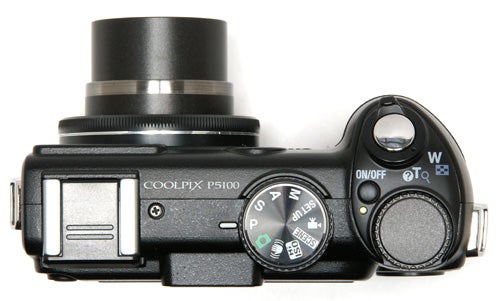
Unfortunately one thing that hasn’t been improved is the woefully slow autofocus system. Even in good light it takes over a second to achieve focus and this slows down dramatically in low light. The P5100 does have a good AF assist lamp, but even using this low light focusing is extremely slow and unreliable, taking nearly five seconds to operate regardless of whether or not it can achieve focus. For a camera aimed at more demanding photographers this is a major failing, especially when compared to the fast and reliable AF system used by main rival Canon.
As before, the P5100’s main strength is its overall image quality, although the extra two megapixels don’t make a huge amount of difference, with roughly the same overall level of detail despite the slightly larger image size. The distortion control feature does work well, eliminating barrel distortion at wide angle and also cutting down the slight chromatic aberration that is visible toward the corners of the frame when it is not used. There appears to be no negative impact on image quality, although it does slow down shooting speed even more, to approximately four seconds per shot, so you might not want to leave it switched on all the time.
Noise control also appears to be virtually unchanged. Low sensitivity image quality is excellent, with nice smooth colour gradations and plenty of fine detail. Quality remains good up to 400 ISO, with some noise but good colour reproduction and not to much loss of detail, however shots taken at 1600 ISO and above are very noisy, and the 3200 ISO maximum, available only at a smaller 5MP image size, are really pretty ropey.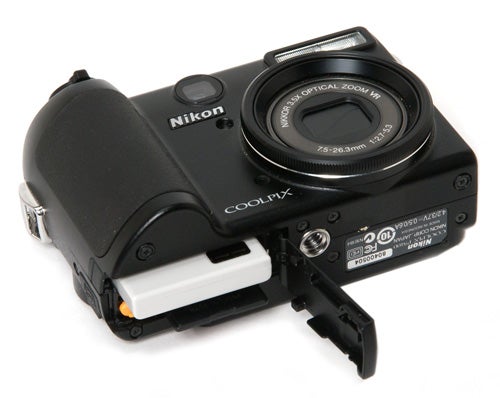
The EXPEED image processor seems to do a better job of preserving dynamic range than its predecessor, with good shadow detail and few burned-out highlights even on high contrast and brightly lit shots. Overall the image quality is definitely a cut above the average pocket compact, and while the P5100 still isn’t competing with the Canon G9 it is at least a step in the right direction.
”’Verdict”’
The Nikon CoolPix P5100 is a small but worthwhile update of the P5000, and while it may not tempt owners of the previous model it is a good alternative to a point-and-shoot compact for anyone who wants a bit more creative photographic control. It is solidly made, handles well and looks suitably impressive despite its relatively small size. Its main strength is its excellent image quality, but it is let down by slow performance, especially its disappointing AF system.
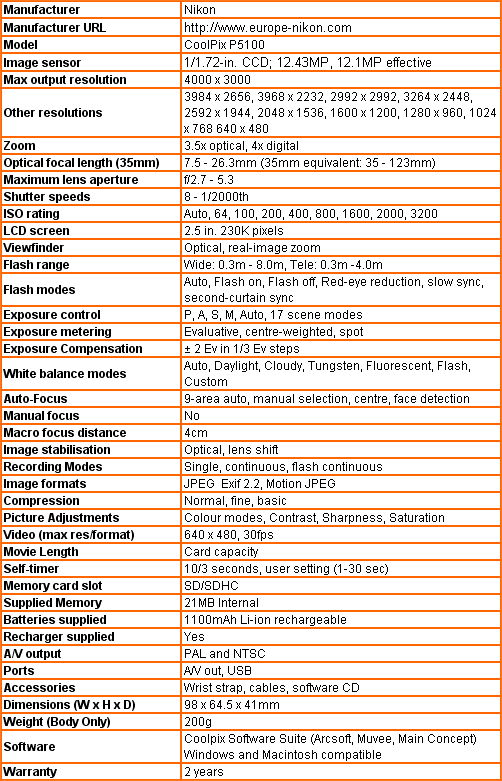
”Over the next few pages we show a range of test shots. On this page the full size image at the minimum and maximum ISO settings have been reduced to let you see the full image, and a series of full resolution crops have taken from original images at a range of ISO settings to show the overall image quality. ”
—-
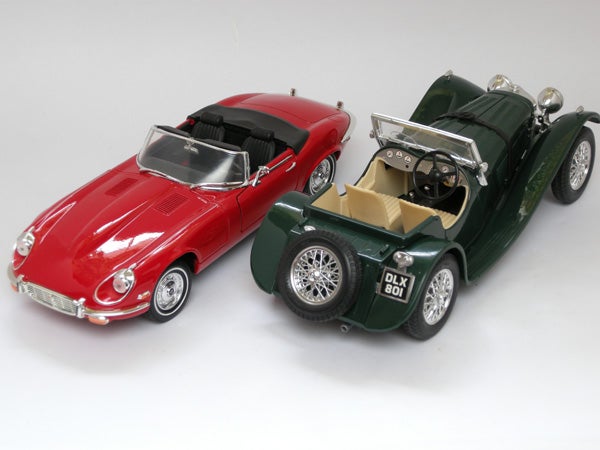
This is the full frame at the minimum sensitivity setting of 64 ISO.
—-
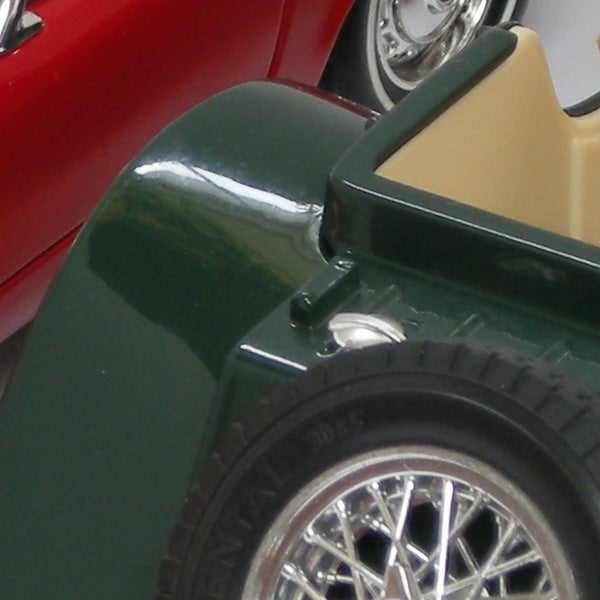
At 64 ISO the image quality is excellent, with no visible noise, smooth colours and good detail.
—-
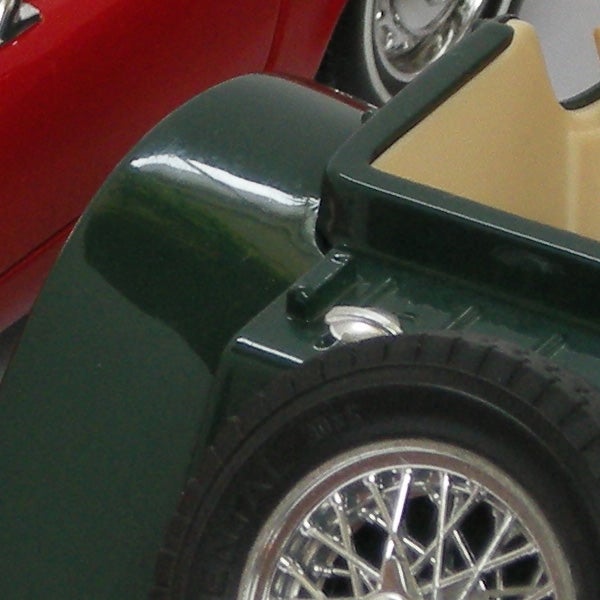
Image quality at 100 ISO is also very good.
—-
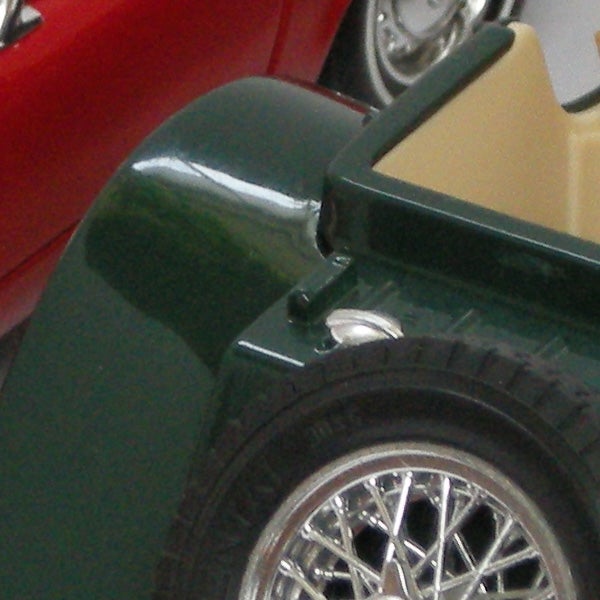
There is a little noise visible at 200 ISO, but not enough to cause a problem.
—-
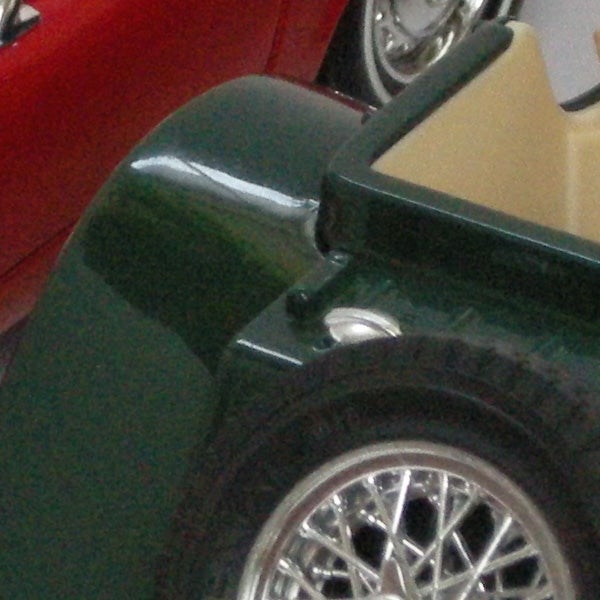
Some fine detail has been lost at 400 ISO, but the overall quality is still pretty good.
—-
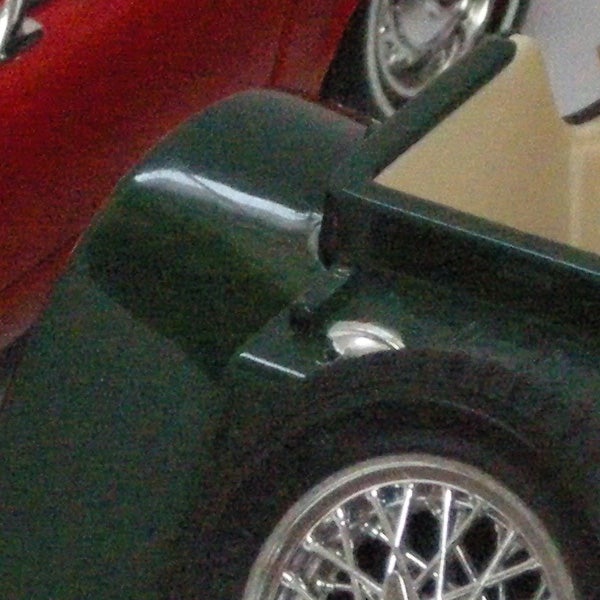
At 800 ISO the image quality is reduced, with lots of noise and loss of detail, but the overall colour is still fairly accurate.
—-
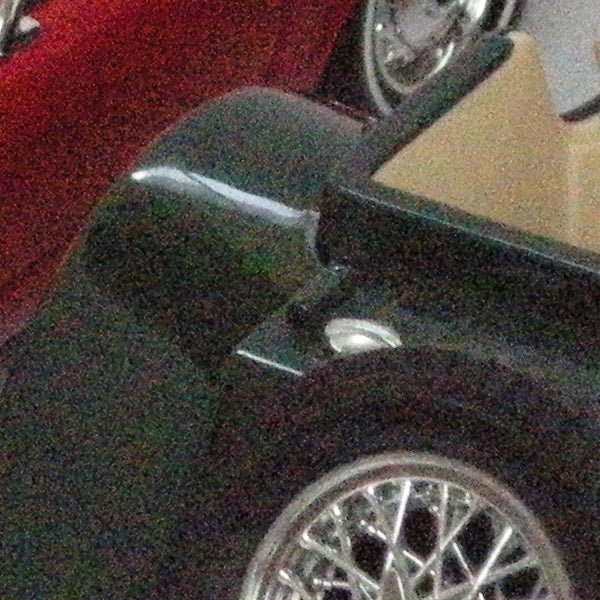
Image quality takes a sharp downwards turn at 1600 ISO, with heavy noise and poor colour.
—-
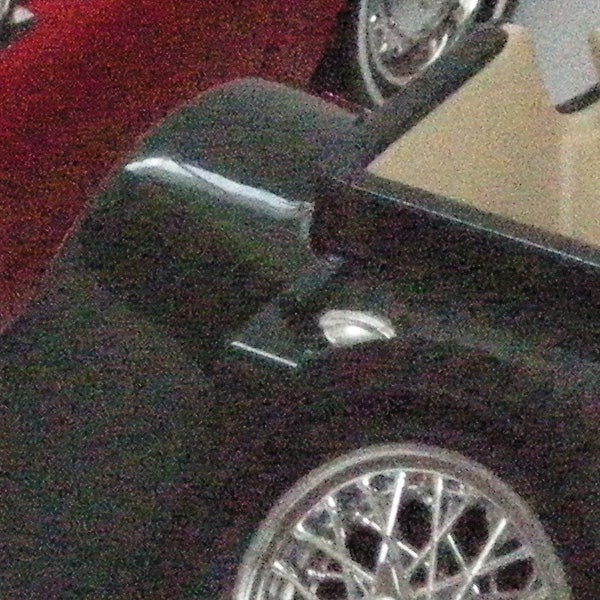
2000 ISO is the highest setting at full resolution, but the quality is terrible.
—-
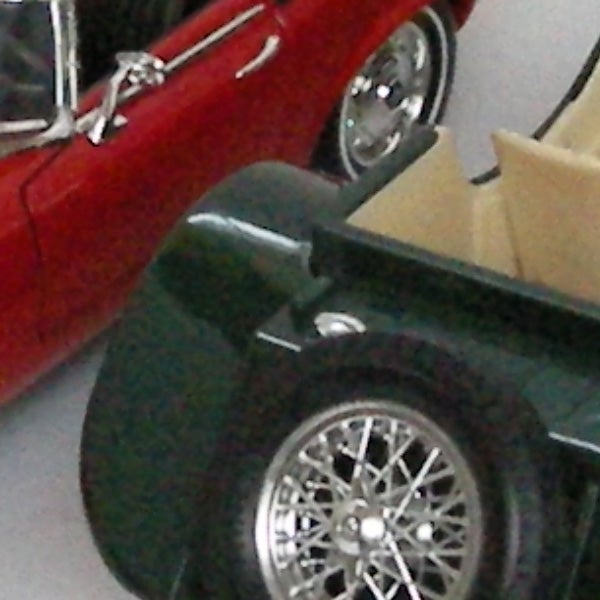
3200 ISO is available at 5MP, but the results are pretty poor, as is usually the case with these gimmicky high speed settings.
—-
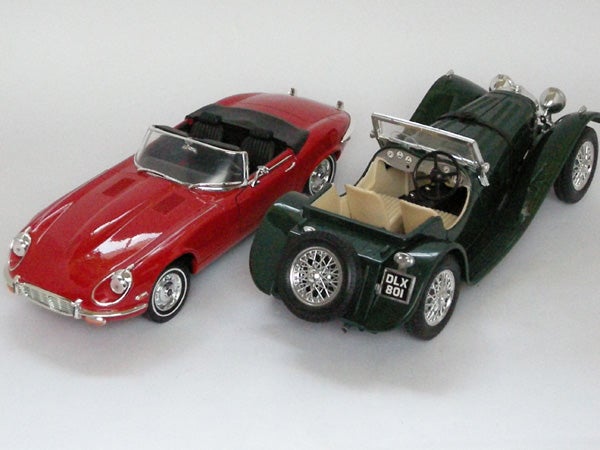
This is the full frame at the maximumsensitivity setting of 3200 ISO.
—-
”A range of general test shots are shown over the next two pages. In some cases, the full size image has been reduced for bandwidth purposes, and a crop taken from the original full resolution image has been placed below it to show the overall image quality. Some other pictures may be clicked to view the original full-size image. ”
—-
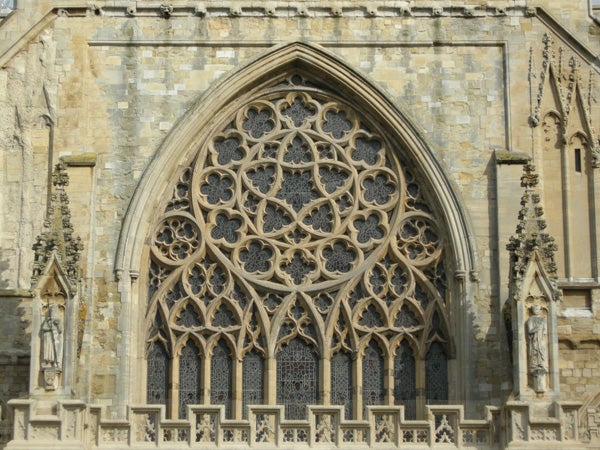
The usual test shot of the cathedral window to compare detail and sharpness with other cameras. See below for a full-res crop or click to download the full-sized version.
—-
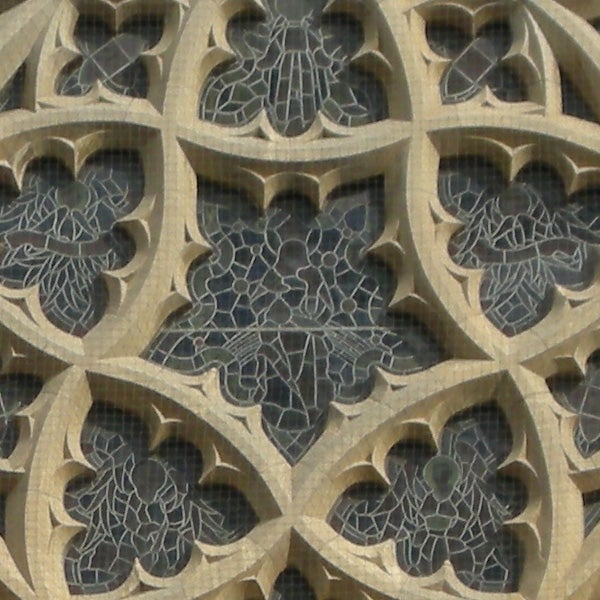
The level of fine detail is very good, but it’s not really much of an improvement on the P5000.
—-
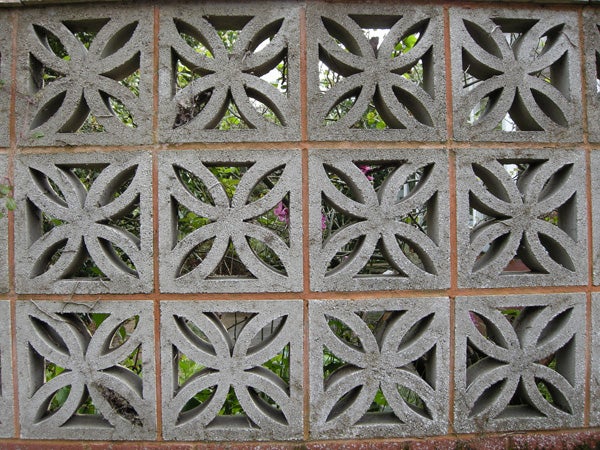
With the distortion control feature turned off, the lens does produce some barrel distortion at the wide angle end.
—-
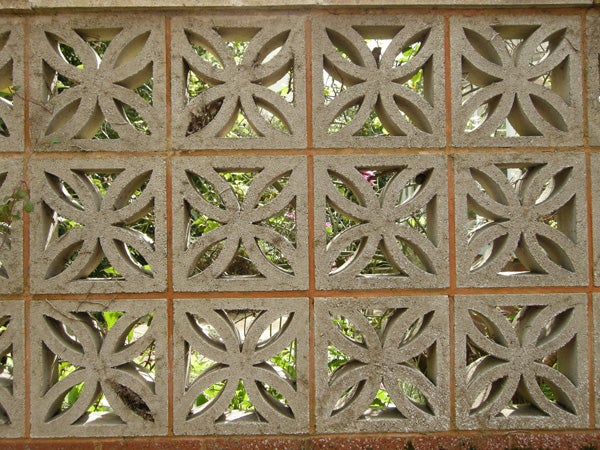
Switching distortion control on corrects this, and produces nice straight edges.
—-
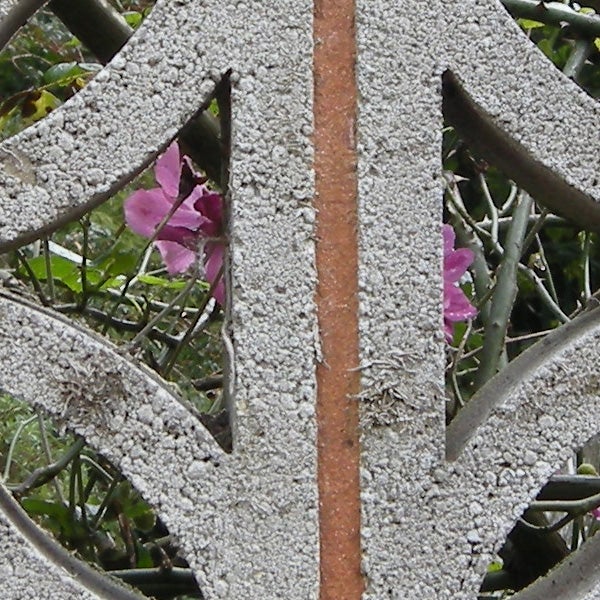
Centre sharpness is excellent thanks to the high quality lens.
—-
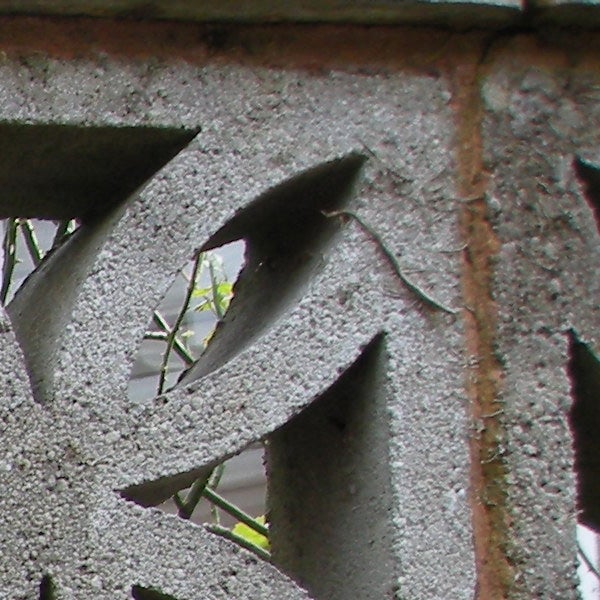
With distortion control off there is some slight chromatic aberration visible toward the corners of the frame.
—-
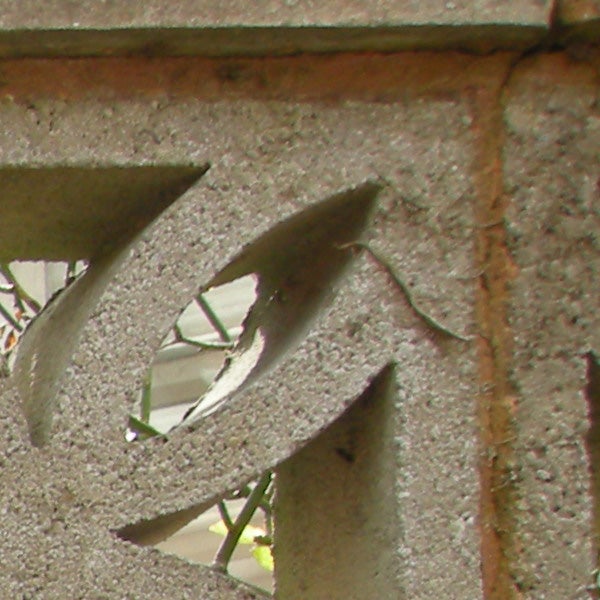
The distorion control appears to correct this, although it does nothing for the slight corner blurring.
—-
”Here are some general test shots to help evaluate the camera’s overall image quality, including the zoom range of the lens. Some pictures may be clicked to download the full size original image. ”
—-
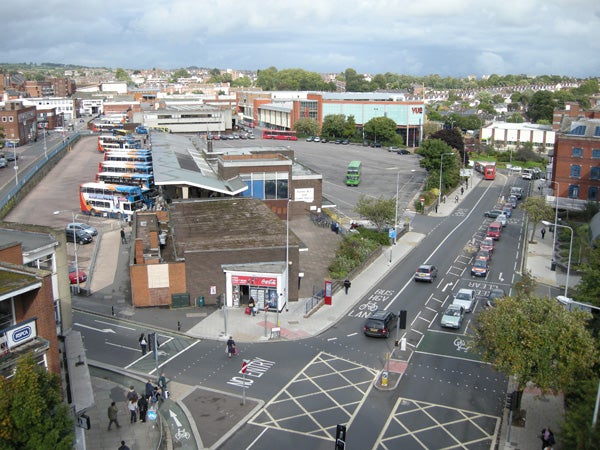
I haven’t taken this shot in a while, but Exeter’s horrible old bus station is still there for now. It’s due to be demolished soon though. The wide angle end of the zoom is equivalent to 35mm, fractionally wider than the P5000 thanks to the difference in sensor size.
—-

The telephoto end is equivalent to 123mm, again slightly shorter than the P5000.
—-

Colour reproduction is excellent.
—-
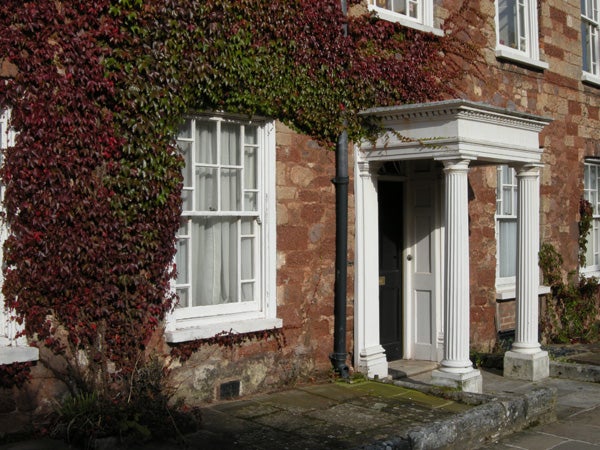
Despite strong lighting the highlights have not been burned out.
—-
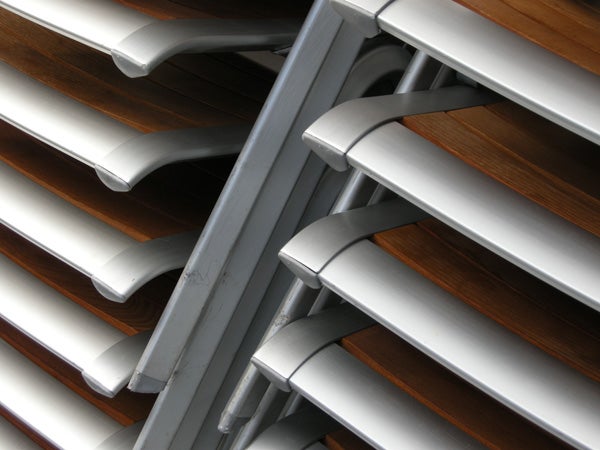
The superb handling of the P5100 encourages you to use it to take photos of just about everything.
—-
Trusted Score
Score in detail
-
Value 7
-
Image Quality 9
-
Build Quality 9
Features
| Camera type | Digital Compact |
| Megapixels (Megapixel) | 12.1 Megapixel |
| Optical Zoom (Times) | 3.5x |

